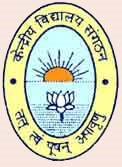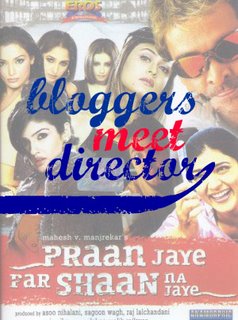 24th February
24th February Inaugural Session: 9.30 - 11.00 A.M.
Concept Note: Amit Kumar Sharma: Cinema represents civil society, not controlled by state, it’s a private domain and functions like temples, people see films to rejoice and heal. This seminar is an attempt to bring together film makers, film academicians, film critics/ journalists and enlightened audiences to engage in a strategic dialogue on cinema.
Welcome Address: Avijit Pathak (Chairperson CSSS): Issues on interface between society and cinema, sociology of cinema is essential for critical learning, films seek to reconcile history and myth
Guest of Honour: Amitabh Kundu (Dean SSS) Issue of accountability, and building consensus among institutions about cinema and its study.
Chair: Arun Kaul – Need to use the film as pen and paper, the value of telling a story in a film.
Speaker: Vinay Shukla- He traced the history of popular Hindi cinema, subjective/ selective historical evolution, need to look at films more closely like how Devdas is a metaphor of the weak self in all of us who cannot fight injustice. Two unique features of our films- music and melodrama.
Tea Break 11.30-11.45
Session One: 11.45-1.00
“The Nature and History of Indian Cinema”Chair: Riyaz Punjabi: Asian cinema accentuation, He spoke about Nehruvian socialism in Hindi Cinema
Speakers:
Udayan Vajpayee: Anthropology proposed by popular Hindi cinema, archetypal images of Pathan, Sikh, Tribal. The archetypical characters that this cinema tries to portray inevitably proposes an anthropology which by and large is the product of the mannerism inherent in the making of this cinema. What are its manifestations and implications? Also market industry of Bombay films needs to be questioned.
Jayprakash Chaukse: Commercial cinema started in USA in factory godowns, escapist films were made for factory workers. Spoke about corporatization of film production and how formula cinema was successful and how new theatres of B.N. Sarkar brought films and literature together.
Arun Kaul: He spoke on the future of Indian Cinema and how the history and form of cinema holds a clue to its future.
Discussant: Roddur De
Lunch 1.00 - 2.00
Session Two: 2.00 - 4.00
“Future of Indian Cinema”Chair: Jayprakash Chaukse: New developments in cinema, like how in the US film makers offer audiences choices of climax of a film, this could affect the director’s creative liberty and change the way cinema is made and looked at.
Speakers:
Vinod Anupam: History of Indian Cinema reflects the history of India. There is no rigid grammar in our cinema and the art is capital intensive.
Sanjay Jha: Cinema is a costly medium. Market for cross over films has developed with the emergence and spread of multiplexes.
Pradeep Tiwari: Film makers like Rituparno Ghosh, Ram Gopal Verma and Mani Ratnam are from regional centers and are making Hindi films to get noticed. The emergence of the “brand” in screenplay writing eg Krishh and bournvita, yaadein and Coca Cola.
Vinay Shukla: Formula of pan Indian cinema has crumbled down with the emergence of multiplexes and the expansion of NRI audiences. In order to ensure sustainance of the industry we need to develop the audiences.
Ajay Brahmatmaj
Discussant: Devendra Chaubey
Tea Break 4.00 - 4.30
Evening 4.30 onwards
Movie Screening:
“Pran Jaaye Par Shaan Naa Jaaye” Directed by: Sanjay Jha.
Discussion: Sanjay Jha, Amit Kumar Sharma, Sanjay Pathak (Aaj Tak)
25th February Morning Session 10.00 - 1.00
Panel Discussion
“Changing Stereotypes in Indian Cinema”Chair: Sanjay Jha
Speakers:
Anup Kumar: Bollywood has brand visibility in the global market. Changes due to global cultural flow affected the stereotype. Films are now made for urban Indians and global cities.
Chetan Katoch: Swades discourse on Nation, parallel between SRK as Mohan and Gandhi ji. The idea of moving from global to local. NASA to a village. The film interrogates the idea of the nation. And discusses the idea of the mother- real and foster. It questions the stereotypes, myths and traditions through the voices of Mohan and geeta.
Vivek Kumar: Spoke on lack of caste consciousness in our films. The hero is shown as an omnipotent figure who takes away all the pain, he represents patriarchy. Cinema has lead to confusion in understanding of Indian society; it has created simplistic stereotypes and has neglected reality. Pain and agony of Dalits not represented in films so far.
General Discussion
Tea Break 11.30 - 11.45
Lunch Break: 1.00 - 2.00
Afternoon session 2.00 - 4.00 P.M
“Portrayal of Traditional Institutions in Indian Cinema” Chair: M N Panini: Media dominates and orchestrates social life. There is a complex relation between society and cinema. Bollywood has to ignore or down play caste so as to cater to lager audiences. So caste issue was converted into a class issue.
Speakers:
Wagish Shukla
Udyan Vajpayee: He spoke on the Myth that Indian Cinema Reflects Indian Reality.
Harish N Das: Spoke on the film “Benam Badshah” starring Anil Kapoor and Juhi Chawla and its original southern film. He brought into light the issues of patriarchy, family, marriage, motherhood, orphanage, rape, and life of the poor as portrayed in cinema.
Samarpita Ghosh Ray: Spoke on the portrayal of the village in films and how it is represented as a homogenous entity that is not complex, but simple.
General Discussion
Tea Break 4.00 - 4.30
Evening 4.30 onwards
Movie screening: Diksha, directed by Arun Kaul
Discussion: Arun Kaul, Amit Kumar Sharma, Pramod Kumar Dubey
26th February Morning Session 10.00 -1.00
“Unity and Diversity in Indian Cinema” Chair: Ehsanul Haq: Can we evolve any methodology to examine the relationship between society and cinema? Cinema is perpetuating hierarchy so how do we evolve unity in diversity.
Speakers-
Pramod Dubey: Schism between education and aesthetic/ creative pursuits. There is unity at the level of appealing to basic instincts and desire.
Mirnal Kant Pandey: Spoke about the “toy theory” of P. Harren and related it to bigger rewards like recognition. Films give us different toys – mass reality – toys of material acquisition. The issue of empowerment of audience is not addressed. There is a need to do away with the song and dance routines and the excessive emotional passions. Cognitive branding is required to make empirical assessments and here JNU and its film society will play a major role.
Maitreayee Chaudhuri: Unity and diversity within the framework of nation and state, Conscious part of our development agendas and modern projects, Central to freedom movements. Imagined community of nation is intrinsically related to modern media that binds us. Unity also emerges due to the historical forces that are at work.
G.Srinivas: Telegu started with mythological movies, for 30 to 40 years they were the dominant genre. Shift in themes from mythological films to social films. Movies from Hong Kong dubbed in Telegu and shown. Now the commercial and economic aspects are blending.
Renuka Singh: There is both good and bad cinema, the need is to evolve aesthetic sensibility to discern the good from the bad. She also spoke on youth and cinema talked about films like Dil Chahta Hai and the young Turks in Mumbai.
K.Krishna Shankar: Manoj Tiwari is like the Amitabh Bachchan of Bhojpuri cinema. The Bhojpuri cinema is a Rupees 100 crore industry. It has patrons in Fiji, Ghana, Surinam and Philippines. But it is still not recognized in academic world.
Discussant: Arvind Shankar: If Telegu cinema has its influence beyond Andhra Pradesh and Bhojpuri cinema has its audience beyond UP and Bihar then we can say that cinema has drawn the contours of a kind of linguistic cultural nationalism and does it in anyway question borders of state.
Discussion: Pradeep Tiwari, Amit Kumar Sharma, Nilika Mehrotra
Tea Break 11.30 -11.45
Lunch Break: 1.00 - 2.00
Afternoon session 2.00 - 4.00 P.M
“Political Economy of Indian Cinema” Chair: Anup Kumar
Speakers:
Pravin Jha: Cinema is a powerful metaphor of the interplay between politics and economics. Films of 50’s 60’s have showed images of nationalism, idealistic optimism; the period of 70’s onwards showed hesitant nationalism. Now we also see a celebration of hedonism and sexualism.
Arun Kumar: Relative autonomy of artists- though financed by capital were made by IPTA. Filmmakers like Benegal and Nihlani made films challenging the state, even though their films were financed by NFDC.
Satish Jain: Complications are there as the cultural products (collective aspect) are heterogeneous. Labour Market in films- some actors charge in crores and extras are made very less. Dominance of market paradigm affects cinema too
Ajay Brahmatmaj: The image of hero – fair, tall, sharp featured, pathan type physique became popular as a result of which the other types did not become popular. The need for popular stars like Dilip Kumar and Meena Kumari to change their names on coming to Bollywood-the politics behind that? Also the forces/ politics behind success and flops.
General Discussion
Tea Break 4.00 - 4.30
Evening 4.30 onwards
Movie Screening: Who Subah Kidhar Nikal Gayi, Directed by Tripurari Sharan Discussion: Tripurari Sharan, Amit Kumar Sharma, Somnath Sen, Arun Kaul
Movie Screening: Floating Lamp Of The Shadow Valley, Directed by Rajesh Jala
Discussion: Rajesh Jala, Amit Kumar Sharma, Arun Kaul, Sanjana Sharma
27th February Morning Session 10.00:1.00
“Sociology of the Blockbuster Chair: Tripurari Sharan
There is a need to configure lowest common denominator of receptivity of audiences
across geographical territories. There has been a paradigm shift in assessing the success
of a film, from audience to returns. The focus has shifted to multiplexes and overseas audiences. It is no longer projected to the hinterland.
Speakers:
Pradeep Tiwari: Spoke on the way art is consumed by the market and how various strategies are now used to market the film as a product. He also discussed about the need to differentiate between a real blockbuster and a sponsored blockbuster. The thrust was earlier on audience responses, now superhits are “made” superhits strategically, by the use of the media, products like T-shirts, coffee mugs, special jewelry, toys etc.
Shubhangi: The way the disabled are shown in Hindi cinema leaves a lot to be desired. The representations create responses to reality. We often see the one-eyed villain who is seen to represent the moral disorder in society. In the recent past some of the biggest hits / blockbusters like “Koi Mil Gaya”, “Iqbal” and “Black” have had as their main protagonists a disabled person. The success of these films raises legitimate questions on the representation of the disabled in cinema today.
Chetan Katoch: There are two kinds of blockbusters, one is within India and the other is outside India (NRI). Bollywood has crossed borders and has still retained its indigenous character while emerging as a challenge to Hollywood. The two criteria for declaring films as blockbusters are revenue and popularity. Some do well in one aspect and the rest in the other.
Rakesh Kapoor: Films today target a different kind of market and follow a different strategy to ensure success. There is a need to look at why some films are absolute hits and why some fail miserably inspite of being “good” according to people.
Discussant: Vinod Anupam
Tea Break 11.30 - 11.45
LUNCH BREAK 1.00 - 2.00
Afternoon session 2.00 - 4.00 P.M
“Contemporary Concerns in Indian Cinema” Chair: Anand Kumar
Speakers:
Tripuari Sharan: There is a need to look at where the film industry is headed and how can we ensure that the future holds good for the industry and its audiences.
Vinod Anupam: The concern today is one of how the audiences today are accepting certain films and ideas which were not acceptable to Indian people about 5-10 years ago. Had “Fanna” been made in the last decade Kajol would have succeeded in reforming Aamir and they would have lived happily, but in today’s time and age love is important but so is the mission you have in hand. The themes and storylines have changed in the last few years and so has the taste of the audience. Surely there is a concern about where our cinema is headed.
Sanjay Jha: He spoke about the concerns of a film-maker. He elaborated on how as a film-maker who has made two films despite not having a “godfather” in the industry, what are the issues and concerns he feels Indian cinema will have to deal with. These issues and concerns relate to the financial aspects of film making – getting finances to make a film. Then the lack of good stories, which are vital to making a good film. Also the problems of the “star system” and getting the dates of big names.
Discussant: V. Sujatha
Tea Break 4.00 - 4.30
Valedictory Session
Chair: Anand Kumar: He spoke on how this seminar had brought together the film world and the academic world and such an effort was praise worthy.
Key note speaker: Shyam Benegal: Films are a medium of telling a story and that’s what we do as film-makers. He also spoke about his experiences of making the film “Ankur” and how his producer told him, after the film got great reviews, that, “I’m going to be rich and you are going to be famous.” He also spoke about the great film makers like Satyajit Ray and Ritwik Ghatak and their films and the way they got funding from the government agencies and made films that questioned and problematised the government machinery.
Vote of Thanks: Amit Kumar Sharma: There is a need to realize that Indian society can be studied through our films. Cinema in India is a very powerful medium and its true potential must be tapped to raise India to new heights. The real and only challenge to the supremacy of Hollywood films is from our cinema and our way of story-telling via films.
High Tea
Movie screening: Ankur, Directed by Shyam Benegal
Discussion: Shyam Benegal, Amit Kumar Sharma
jhaji


























